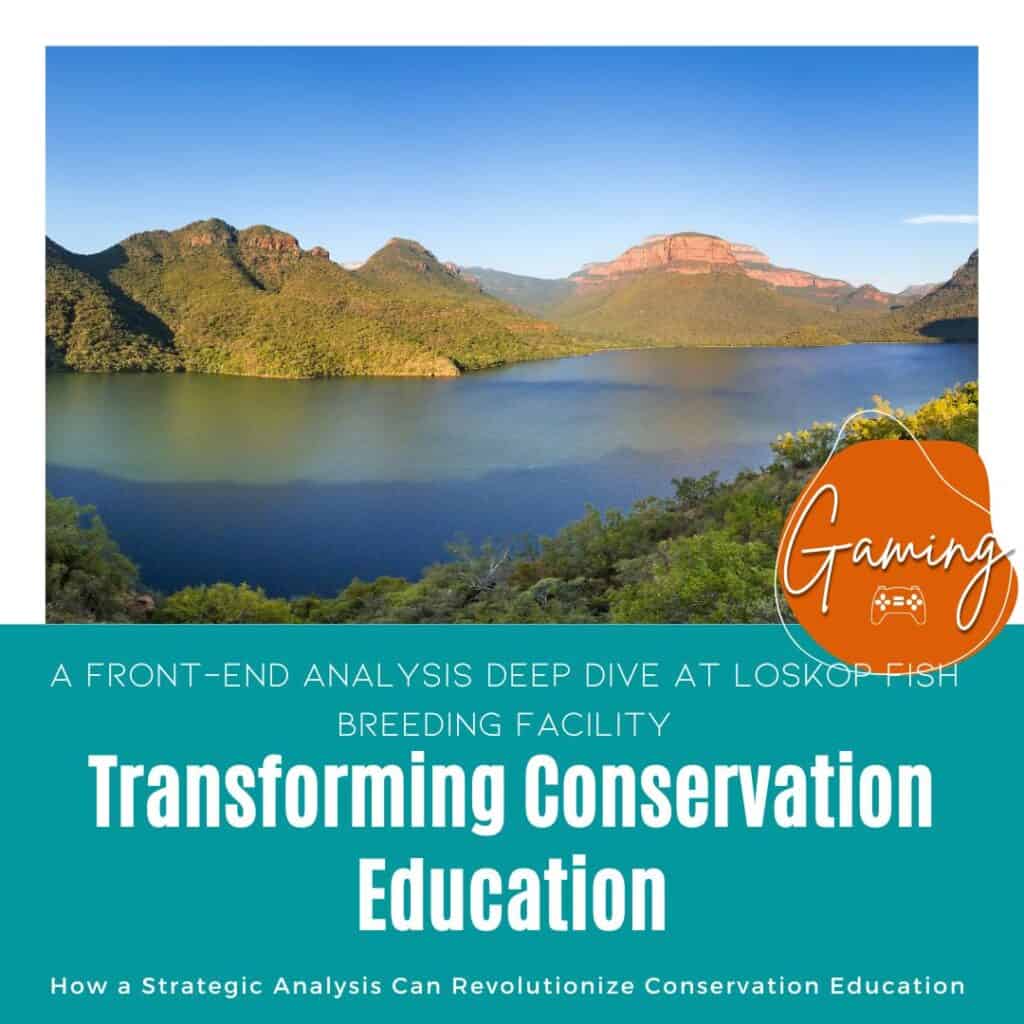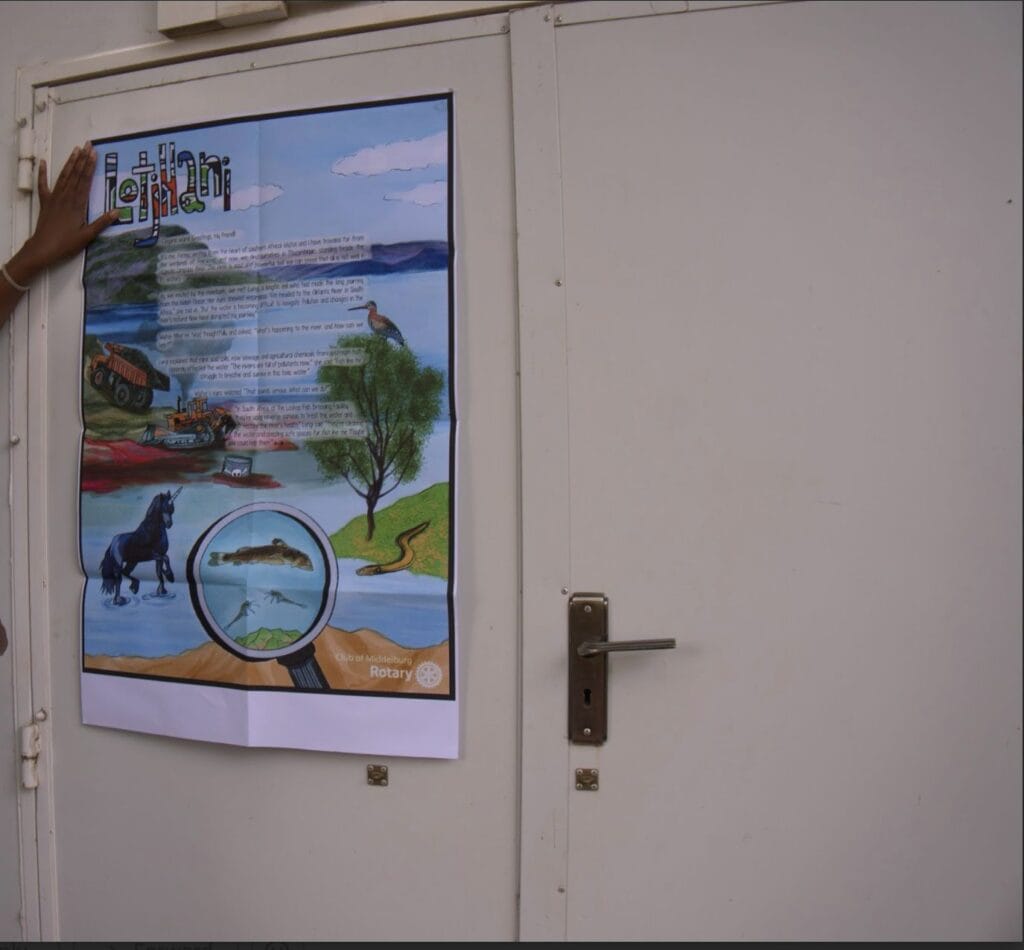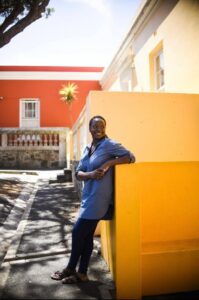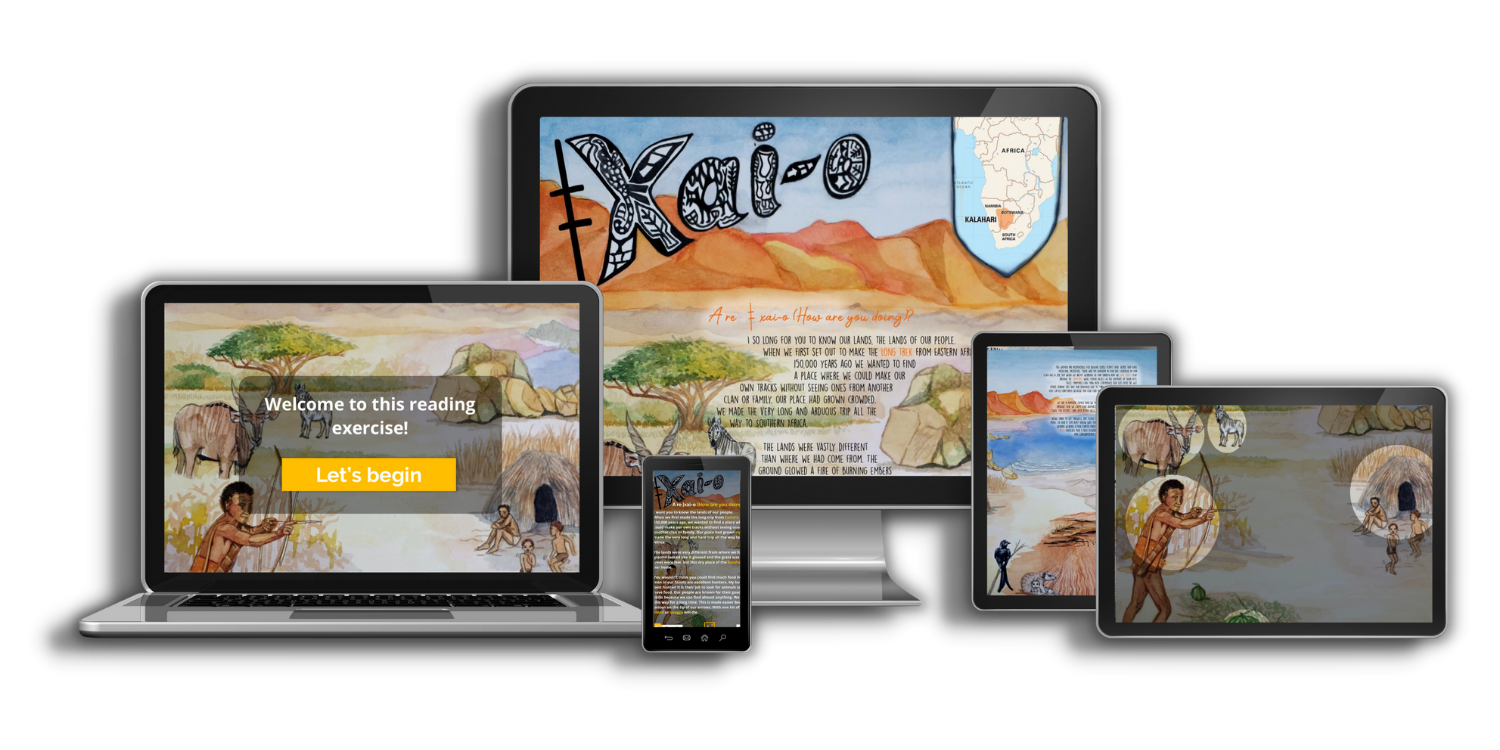Introduction:
Our Rotary Club is excited to kick off a new project aimed at fostering environmental stewardship and conservation among young people. Partnering with Thungela and the Loskop Fish Breeding Facility, we’re dedicated to creating educational tools that inspire the next generation to cherish and protect our natural world. Follow along as we detail our progress and the steps we’re taking to make a real impact.
Week 1: Rough Needs Assessment
In our first week, we dove into a preliminary needs assessment to understand how we could best support the Loskop Fish Breeding Facility. Our focus was to get a clear picture of what the facility aims to achieve and where they might need a helping hand. We learned that the facility is crucial for preserving native fish species and educating the public about aquatic ecosystems.
However, we quickly identified a significant challenge: engaging school-aged students during their educational tours. The existing materials struggled to break down complex ecological concepts and faced language barriers that made it tough for young learners to grasp the information. With this in mind, our task became clear—create multilingual educational posters that would effectively communicate key details about the 17 fish species and their roles in the ecosystem (and the uniqueness of each). This first step helped us set our goals and lay the groundwork for what’s next.
Week 2: Performance Analysis
Building on our initial assessment, our second week was all about digging deeper into the performance aspects. We took a closer look at the current educational materials used at the facility. By reviewing these resources, we could identify what worked well and what didn’t.
Through conversations with the facility staff and examining feedback from previous educational sessions, it became evident where the existing materials fell short. We pinpointed specific areas that needed improvement to better engage students. We also set up criteria to measure the effectiveness of our new posters, focusing on how clear and visually appealing they are, and how well they capture students’ interest.
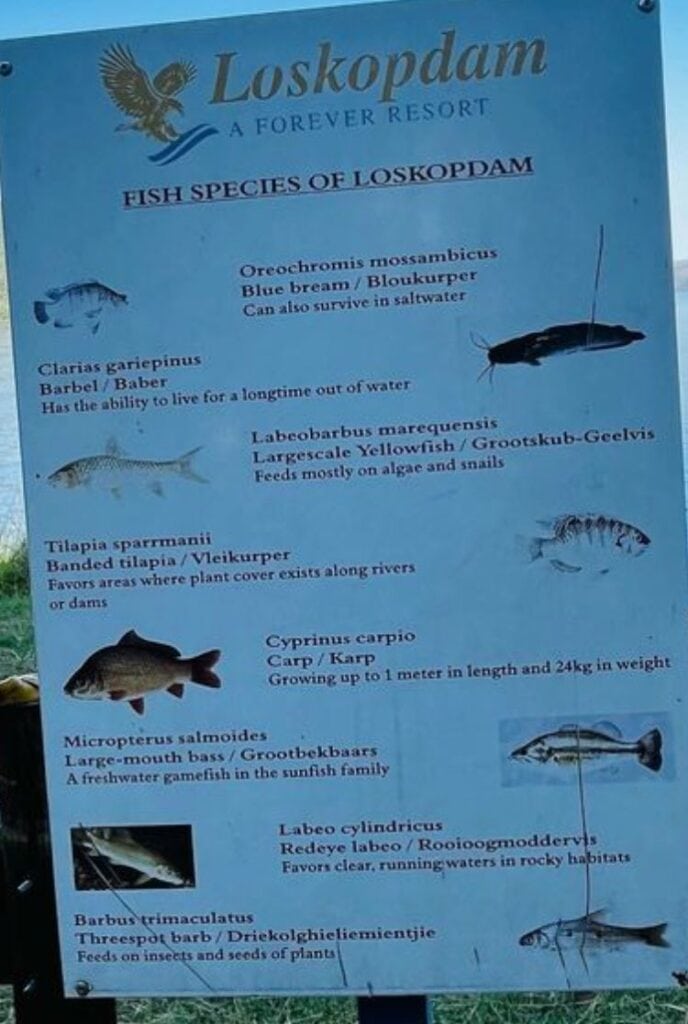
Week 3 and 4: Surveys and Questionnaires
The third and fourth weeks were devoted to obtaining further in-depth information via surveys and questionnaires in the wake of our performance study. Gathering input from a variety of stakeholders—such as facility employees, interns, and students who took part in the educational tours—was our main goal.
We visited and spoke with the interns and guests face-to-face during these weeks. We gained insightful knowledge about the practicality of the current instructional materials and the expertise of the interns thanks to this hands-on approach. Although the interns, hired by the Mpumalanga Tourism and Parks Agency (MTPA), were acquainted with the facility’s operations, the manager at Thungela had mentioned that there might have been some gaps in their particular understanding of the fish species being produced. Furthermore, the fact that these interns received minimum wage may have had an impact on their involvement and drive.
We evaluated the interns’ present knowledge of the fish species and noted any gaps in their knowledge by having direct conversations with them. We were able to comprehend visitors’ experiences and opinions of the informative tours through our conversations with the interns. We used this feedback to make sure our instructional posters adequately addressed the needs of the interns and the students. We hope that this procedure will improve everyone’s educational experience at the Loskop Fish Breeding Facility by making it more interesting and instructional overall.
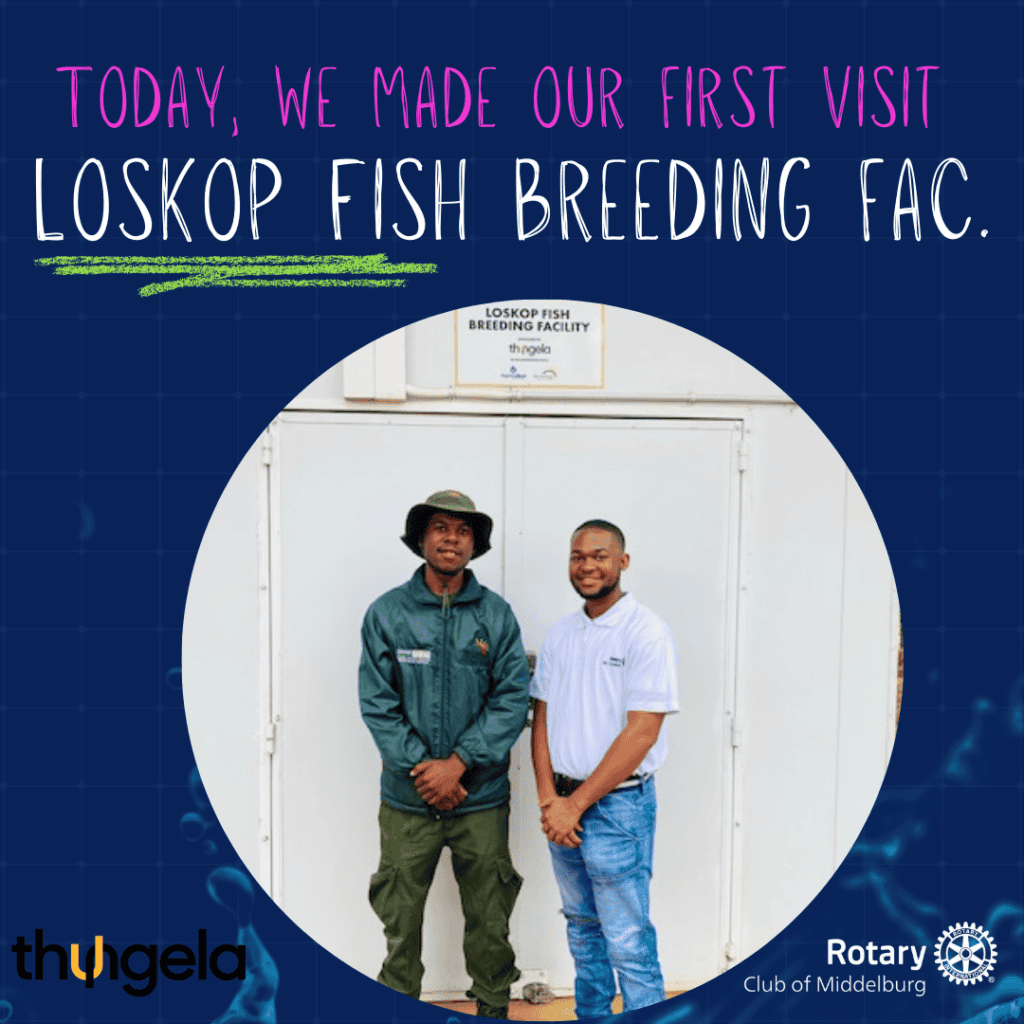
Week 5: Observations
During our time at the Loskop Fish Breeding Facility, we got a real sense of the potential it holds, but we also noticed a few areas where improvements could make a big difference for both the interns and visitors.
The facility itself is fairly small, which means there’s not a lot of space for interactive or educational displays. As visitors, we found ourselves relying heavily on the interns for information, but without clear signage or materials to guide us, it was easy to feel a bit lost. The interns do their best to lead the tours, but there’s a lack of things on-site for visitors to engage with on their own, which would be really helpful in a space this size. Something as simple as signs, maps, or interactive displays could make a world of difference for visitors to explore and understand the work happening here.
One thing that stood out was that the interns, who live on-site, rotate shifts, so not all of them are available at once. While they have a good understanding of the fish-breeding process, their knowledge about the different species and the bigger picture of the facility’s conservation work seemed limited. It’s clear they’re doing their best with what they have, but there’s definitely an opportunity to give them more tools and training to really connect their work with the broader goals of the facility. This would not only help them feel more integrated but also improve the tours for visitors.
Another issue is the limited number of school visits. One intern mentioned that he could only recall two school tours for the entire year, which is surprising given how much potential the facility has as an educational resource. Right now, there’s a gap between what schoolchildren are learning in class and the conservation work happening at the facility. We believe Thungela could help bridge this gap by creating resources that teachers can use before and after the visits. That way, students could come in with more context and leave with a better understanding of the important work being done here.
Given the facility’s small size, adding a few interactive features—like educational displays, hands-on activities, or even digital information stations—would make the experience so much more engaging. Visitors could learn more about the fish lifecycle, the facility’s role in conservation, and how their work impacts local ecosystems. It would also take some pressure off the interns and give visitors more to explore on their own.
Overall, improving signage, adding interactive elements, and increasing school engagement would really enhance the experience for everyone involved. By making these changes, the Loskop Fish Breeding Facility could become an even more impactful hub for environmental education and conservation.
Week 6-8: Observations & Objectives
At the Loskop Fish Breeding Facility, our main objective is to enhance conservation education, especially for young audiences, by equipping interns with the skills to engage and educate visitors effectively. This week, our observations revealed that while interns like Nkosinathi are skill in general conservation, they often struggle to convey specific fish-related information. For example, when asked about the longfin eel’s role in the ecosystem, responses tended to be basic, lacking depth in conversation or ecological significance.
To bridge this gap, we are focusing on training interns with both foundational ecological concepts and effective communication skills. Interactive displays, multilingual materials, and practical techniques, such as visual aids, will be implemented to help interns make complex information accessible. In the coming weeks, targeted sessions on specific fish species will support our goal of creating a memorable, educational experience for all visitors to Loskop–especially the younger audiences.
Week 9-12: Design Phase
As we transitioned into designing the educational materials, we began with in-depth research on each fish species at Loskop Fish Breeding Facility. This included examining their unique identifying characteristics, distribution maps, and conservation status. We found the most species were classified as “least concern”–except for the Longfin eel, which highlighted an urgent conservation need.
A turning point came with the release of Freshwater Fishes of Southern Africa: A Complete Guide by Paul Skelton, from the South African Institute for Aquatic Biodiversity (SAIAB). This comprehensive resource consolidated our research, providing consistent and detailed information on each species. With reliable data in hand, we pivoted our display design to serve dual purposes: engaging visitors while subtly educating interns.
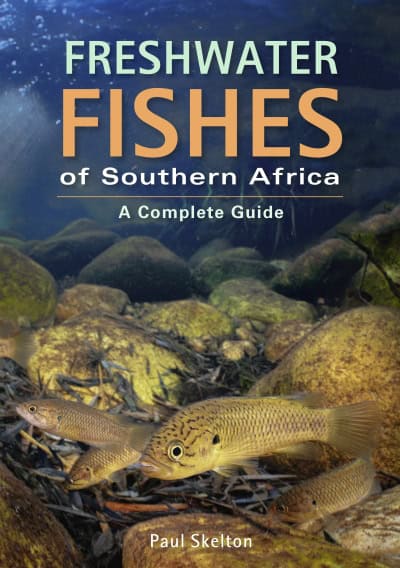
To achieve this , we wove a narrative into the displays, creating a story that guides visitors through the ecosystems, characteristics, and conservation needs of these local fish. This story-based approach keeps content assessible and engaging for the public, wile providing interns with a continuous learning experience. On November 11, we had a team meeting with Dr. Francois Roux (MTPA) and Francois Grove (Thungela Resources) to discuss the material (need for pictures in the field and actual design) and what next steps should be taken. We have scheduled another meeting for two weeks.
Week 13-Design Phase -Supercharged:
Our work this week has taken us a step forward. After weeks of back and forth we finally received the images of the fish from Dr. Francois Roux. These visuals have allowed us to organize the fish into three distinct categories for display, making it easier for visitors to learn about them.
The first poster titled, Zambezi! What’s Easy?, focuses on fish that share similiar distribution maps in the Zambezi River. These species include the Longfin eel (Near Threatened-NT), bulldog, papermouth, redeye, leaden, orangefin, and sidespot–all barbs (except the bulldog) and categorized as Least Concerned (LC).
The second poster, Local is Lekker!, highlights fish found locally within the region, including the Southern stargrazer, Bushveld smallscale yellowfish, Shortspine suckermouth, Lowveld largescale yellowfish and Longbeart–all also categorized as LC.
The third poster, titled Uyapapa–a colloquial Zulu term meaning “crazy” –features species grouped by their aggressive behaviors during rearing. This includes fish like the Southern mouthbrooder, Banded tiliapia, and the Chubbyhead barb, alongside the outlier, Straightfin barb, which is known for its mosquito-eating tendencies.
Looking ahead to week 14, our focus will shift to integrating interactive elements into the first poster, Zambezi! What’s Easy?. We plan to design a magnetic puzzle that allows visitors to move and place the fish on the display, creating a more engaging learning experience. The artwork will also embed key characteristics of each species. For example, the Longfin eel, known for its ability to travel long distances on land and water, may be illustrated on land. Similarly, the bulldog could be shown in its preferred habitat, highlighting the types of waters it thrives in. The remaining barbs–papermouth, redeye, leaden, orangefin, and sidespot–will also be depicted to showcase their unique behaviors and ecological roles.
Week 14 and Beyond: Putting Drafts Together
After several weeks of juggling, we are finally getting things back on track. We visited the facility during the week and we were able to test out some of our ideas.
It was kind of cool to see how researching has led to positive identification of fish and I hope the same holds true for the interns and visitors.
Implementation: Once the posters are finalized, we’ll introduce them during facility tours and assess how they impact student engagement and understanding.

The final poster version of Zambezi! What’s Easy? is shaping up to be both visually striking and mentally engaging. One of its standout features is the clever use of text beneath each illustrated fish. Rather than simple labels, the words form a kind of puzzle — inviting viewers to piece together ecological clues, cultural references, or fun facts linked to each species. It’s a layered design choice that encourages curiosity and deeper thinking, especially for young learners.
While working on this project for Grade 4 English learners in South Africa, I had a really helpful chat with my supervisor, Dr. Oprean. We talked about how important it is to make sure the language I use is easy for learners who are still getting comfortable with English. Just to double-check, I ran my text through the Hemingway Editor — not to simplify it, but to see where it stood. It came back with a Grade 0 rating, which showed that the language was already super simple. That was reassuring because it meant the material would likely be clear for my audience. It also made me think about how to keep things easy to follow while still making the content interesting and engaging.
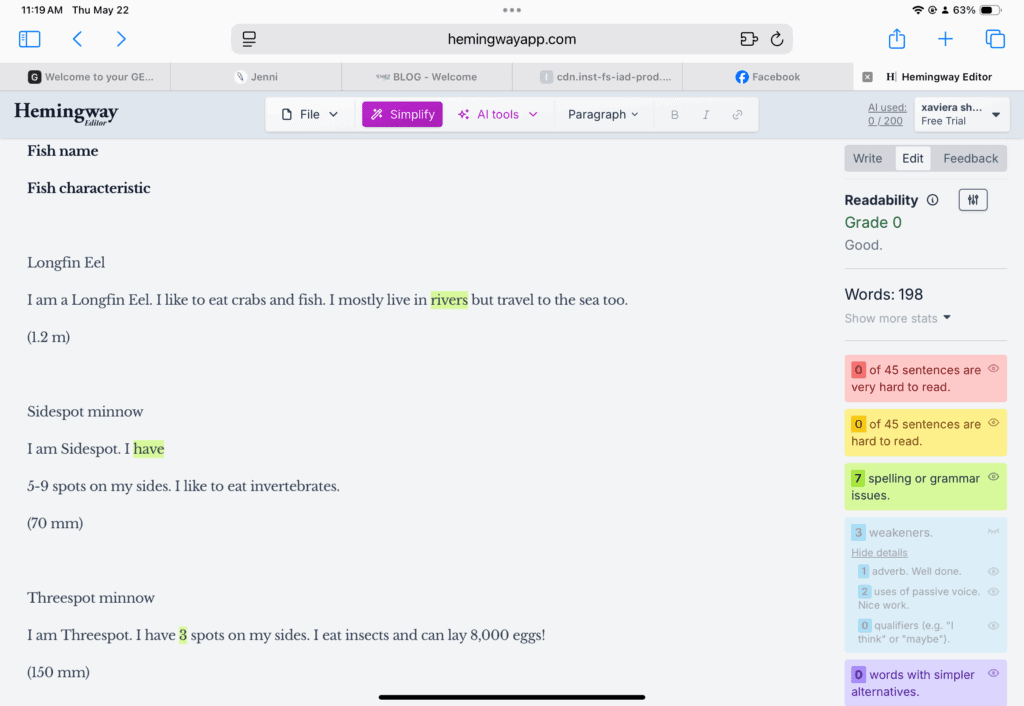
We also got some great feedback from Thungela — they said they really liked how realistic the fish look in the project, which was exciting to hear! Now we’re just waiting to hear back from MTPA so we can move ahead with the next steps.
Our Protoype
We’re excited to be working with Reg Pakari from Whack Designs to bring this creative vision to life. His eye for detail and storytelling through design is helping transform the poster into something interactive and unforgettable.
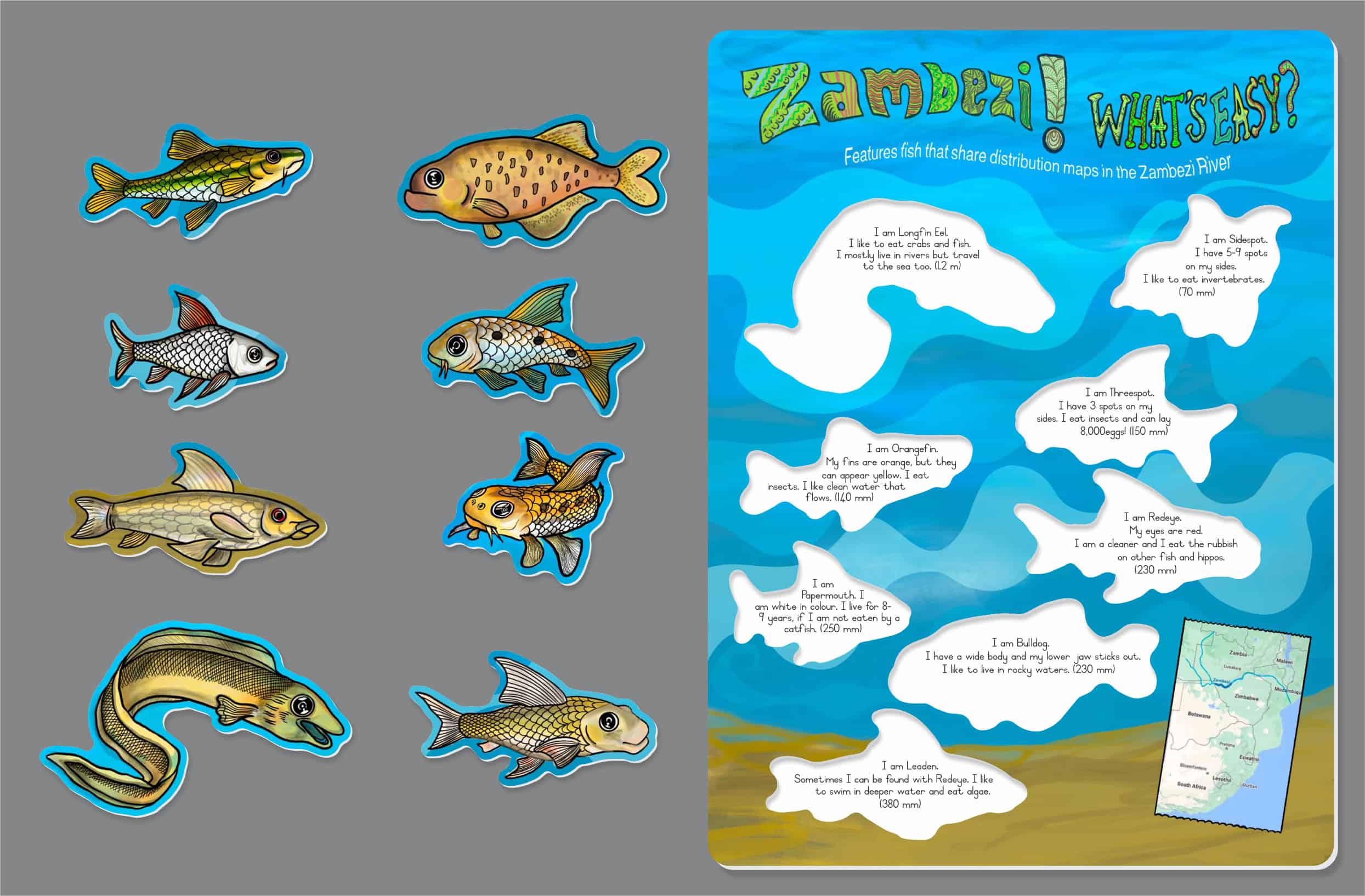

Community Involvement: We’ll encourage Rotary Club members and the local community to support and promote these new educational materials.
Visuals to Include:
-
- Facility Photos: Shots of the Loskop Fish Breeding Facility and its educational activities.
-
- Infographics: Updates and milestones in our project.
Stay Tuned:
We’ll keep updating this blog as we progress with our project. Join us in making a meaningful difference in conservation education!
Side Steps and Reflections:
As we conclude the course Front-End Analysis, it is important to reflect on the different types of assessment that were learned: Training Needs Assessment (TNA), Performance Analysis, Surveys, Observations, Extant Data Analysis, Task Analysis & Objectives, Procedural Analysis, Prerequisites Analysis, Elaboration Theory & Concept Structure (type/kind), and ASK Systems with a Persona.
I found the most useful to be the surveys. The one that probably looked the coolest was the ASK System.


